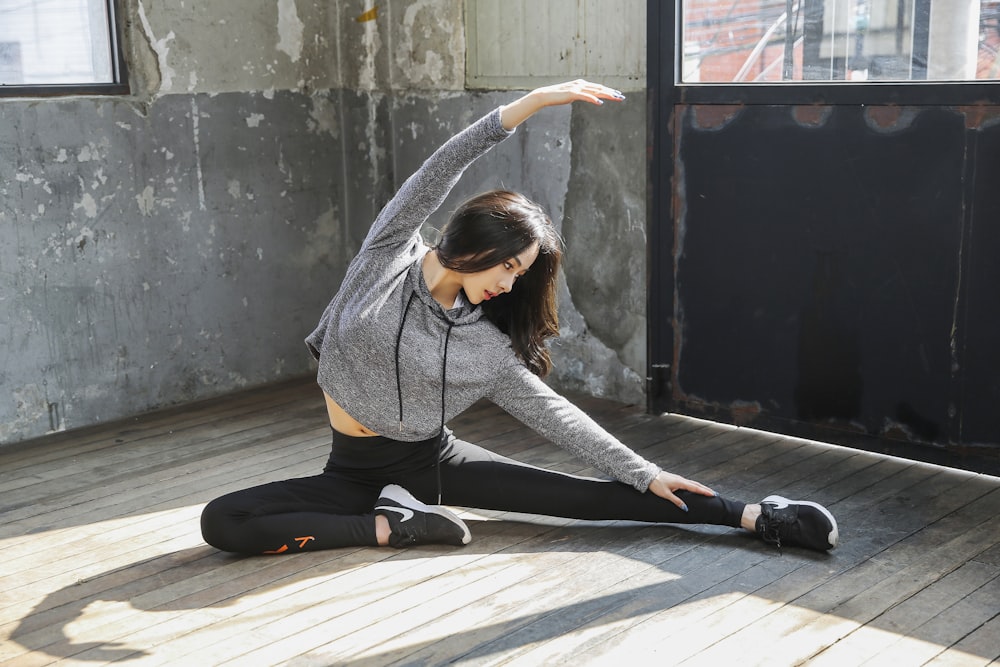
If you are starting to exercise more regularly and wondering how to prevent muscle soreness, you’re not alone. One of the only drawbacks of a great workout session is the potential for sore muscles the following day.
After a successful arm day weightlifting at the gym, for example, you might find it difficult to lift your arms or carry groceries the next day. It’s not that you’re immobilized, it’s simply that your arms are sore. Small micro-tears in your muscle fibres from working out are normal, and this will often cause some discomfort or soreness.
If you’re too sore, your whole exercise routine could be thrown off, as you’ll need more rest days than planned. Your goal should be to minimize soreness so that you can keep exercising and stay on track with your fitness goals.
Not only do you want to know how to prevent muscle soreness, but you also want to know how to prevent injuries such as torn muscles or sprains.
Muscle soreness generally only lasts for 72 hours, so if the same spot is still very painful after that, call your doctor as it could be a strain or torn muscle.
In truth, you may not be able to prevent muscle soreness completely, but there are steps you can take to prevent majorly sore muscles. Below are some tips on how to prevent muscle soreness, or at least minimize it:
1. Warm Up

Warming up before a workout is of the utmost importance, as it’s the best way to prevent injuries and improve performance. Your warm-up is what helps your body’s core temperature heat up and transition into exercise mode. You’re prepping your muscles for exercise by warming them up. Warming up also improves blood circulation and improves range of motion.
Examples of good warm-up exercises before the gym include jumping jacks, knee lifts, side reaches, hip rotations, squats with reach, arm circles, wall angels and jumping rope. Before a run, your warm-up could be 10 minutes of brisk walking. Your warm-up only has to be about 10 minutes long, and you should warm up the muscles you plan on using. For example, do lots of arm circles as a warm-up if you plan on doing an arm day at the gym.
2. Foam Rolling Before and After Your Workout
Everyone should have a foam roller. Before your workout, foam rolling helps increase tissue elasticity, while improving your range of motion and blood flow. Foam rolling gets blood flow to the muscles you’re about to work out and releases any tight spots that would otherwise hinder your mobility and interfere with your workout performance. In other words, foam rolling can help you move more easily with a better range of motion during your workout, and the improved blood flow helps protect you from muscle injury.
Foam rolling post-workout helps prevent muscle soreness, too. Rolling out your exerted muscles post-workout releases toxins from your muscles and reduces the onset of potential soreness.
By foam rolling, you’ll increase blood flow to the tissues, which speeds healing and muscle recovery. Foam rolling does hurt sometimes, but it helps reduce tightness in your muscles and it acts as a myofascial release or self-massage.
3. Learn Proper Form
You can get injured or feel overly sore if you perform exercises without proper form. Weightlifting, squats, and ab crunches are examples of exercises that can leave you quite sore if your form was incorrect while you were doing them.
Ask a professional at your gym to show you proper form, or guide yourself by watching demonstration videos on YouTube.
4. Know Your Weightlifting Limits

Get advice from a professional on what weight is right for you to be lifting. If you want to increase your weight, do so gradually. If you suddenly start lifting weights that are three times heavier than what you’re used to, you’re just begging for muscle soreness to occur.
5. Alternate Muscle Groups on Different Days
Ever wonder why you so often see that it’s someone’s “Leg Day” on social media? It’s because having a weekly workout routine that alternates muscle groups helps prevent soreness. If you’re wondering how to prevent muscle soreness, one of the best tips is to alternate working out different body parts on different days. This way, your arms have a chance to rest while you do a “Leg Day”, and vice versa.
6. Drink Lots of Water Before and During Your Workout
Dehydrated muscles will become tight and more easily injured. Keep hydrated by drinking lots of water both before, during and after your workout. Muscle cells need hydration to recover from being exerted, and that means you need to hydrate all day, not just during your workout.
7. Drink Beverages With Vitamin C and Electrolytes
In addition to drinking water, beverages containing vitamin C are a good idea on workout days, too. There is evidence that vitamin C can prevent muscle soreness. Replenishing electrolytes lost during your workout is important for recovery, too. A smoothie with coconut water (for the electrolytes) and citrus fruits such as oranges and strawberries (for the vitamin C) is a great post-workout recovery drink.
8. Eat Protein and Potassium-Rich Foods

After a workout, you need to give your body the nutrients it needs for muscle recovery by eating the right foods.
Eating protein after your workout helps your muscles heal, and prevents the loss of lean muscle mass. With your protein, you can eat tomatoes or leafy greens which naturally help reduce inflammation.
Potassium is a nutrient known to help prevent muscle soreness and cramps. Bananas, kiwis, cooked broccoli and sweet potatoes are just a few examples of potassium-rich foods.
Some gym-goers who have busy lifestyles simply drink a protein smoothie after their workout as a meal replacement. You can make a custom smoothie that has protein powder, electrolytes, potassium-rich fruits, and fruits high in vitamin C.
9. Stretch
Stretching properly before and after a workout is essential when it comes to how to prevent muscle soreness. Stretching reduces muscle tension and prevents exceedingly sore muscles.
Always stretch while your body is warm. If stretching will be incorporated into your warm-up, save it for right after your warm-up. Similarly, it’s good to stretch right after your workout is complete, while your body’s temperature is still warm and therefore more flexible.
The moment you work out your muscles, your body produces lactic acid which can make your muscles achy and sore. Stretching, however, helps eliminate the lactic acid that has accumulated inside the body. Besides that, stretching also relaxes the muscles so they can recover faster.
Stretching is often part of the “cool down” component of your workout.
10. Cool Down After Your Workout
A 5-minute cooldown is an essential part of your workout that is often missed. A cool-down can include stretches or walk on a treadmill. Cooldowns help your heart rate and breathing gradually return to normal. When you allow your body to gradually slow down its heart rate and breathing, you’re reducing your risk of a dizzy spell or feeling lightheaded.
11. Wear Compression Garments
People who take the concept of how to prevent muscle soreness quite seriously are people who wear compression garments. Some compression shorts, for example, have heating or cooling gel inserts, in case you want to use heat therapy on your muscles. Wearing compression gear can help your muscles recover faster, but it’s something you’ll want to research to see if it’s right for you. With all of the other above tips on how to prevent muscle soreness, you might find that you don’t need to take the extra step of wearing compression gear.
A large component of preventing muscle soreness is doing the right type of exercise for your body. Did you know that based on your genetics, you’re better suited for certain types of exercise? Find out your optimal training program with CircleDNA here.






Comments are closed.